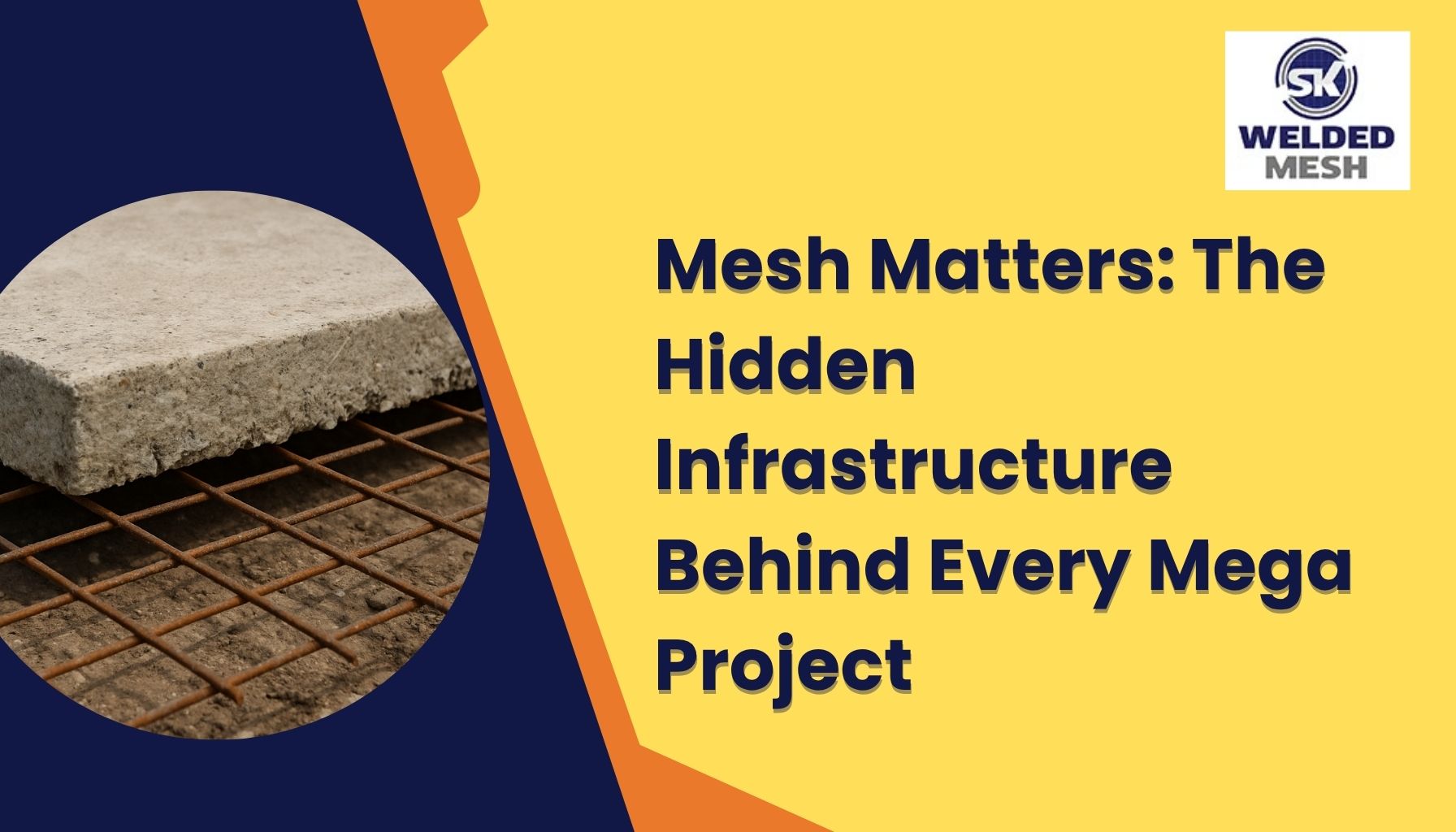

Most of the time, you see the finish. Glass, concrete, asphalt. But long before any of that goes up or gets paved, there’s a layer inside doing the heavy lifting. Mesh is part of nearly every major build, even if no one stops to look at it.
Once it’s placed and poured over, it disappears—but its role keeps going.
If your work involves anything from transit corridors to elevated slabs, you’ve probably seen what happens when this layer is treated as an afterthought.
The smarter choice is planning for it early, and letting it work quietly in the background.
When concrete is wet, it’s only pretending to be solid. Until the mix sets, the formwork and reinforcement carry everything.
This is when mesh earns its place. It stops bulging, shifting, and sagging while the weight settles.
In pours that stretch for meters, or molds that repeat across phases, mesh acts like a grid that catches pressure before it shows up as cracks. This is not about bulk—it’s about balance.
Loads shift. Temperatures swing. Trains, trucks, water flow—each one presses and pulls in ways you won’t see on the surface.
Inside, though, these forces create tension.
If the concrete holds nothing but itself, it starts to break down. Mesh interrupts that process.
It redistributes stress instead of letting it build in one place. Think of it as a buffer built into the skeleton—quiet, but constantly active.
When mesh is made to order, your crew doesn’t stand around adjusting things on site.
The bends are right. The edges match. And the cutouts for embedded parts show up where you asked for them.
You avoid improvising with bolt cutters or reshaping at the edge of a slab.
That means fewer mistakes, less wasted time, and less material left in the corner at the end of the day. It also makes your pour crew’s day run smoother.
Delays don’t always come from big problems. One miscounted bundle or a panel that’s slightly off-spec can hold up an entire segment.
The mesh that helps most on a large job is the kind that arrives organized.
Bundled by area. Labeled by pour sequence. Fit to the molds you already have. Your team doesn’t need to measure twice—they know where it goes, and they keep moving.
Most of the work mesh does happens after you’ve left the site.
It holds pavement steady on expressways. It reinforces walls on tunnels where vibration doesn’t stop. It carries load under runways built for years of pressure.
There’s no ceremony around it. But if the mesh wasn’t right, you’d hear about it when the failures start.
That’s why the builds that last are the ones that get reinforcement right the first time.
Mega projects depend on reliability—across materials, processes, and timelines.
Mesh plays a supporting role, but it’s one that shapes every phase.
We’ve worked with engineering teams where getting the mesh right made the difference between delays and smooth flow.
Our role is to make sure what shows up fits, performs, and stays where it should. If your next build needs mesh that holds under pressure, we’re ready to step in and support it. Get in touch with us today.